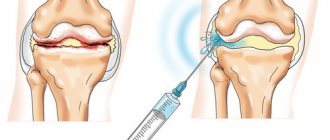What is Cerucal: composition and dosage forms
The active component of the drug is metoclopramide hydrochloride. This is a selective blocker of dopamine receptors that inhibits the activity of the vomiting center. The medication is available in two forms: for oral use and injection. Pharmaceutical forms:
- Tablets: white, uncoated, dosage 10 mg, packaged in blisters or plastic containers. Excipients: magnesium stearate, lactose, starch, silicon dioxide, gelatin.
- Solution for parenteral administration in glass ampoules. One dose: 1 ml contains 5 mg metoclopramide hydrochloride, distilled water, sodium chloride.
The instructions for use of Cerucal indicate that it blocks nerve impulses from the duodenum to the brain, thereby reducing nausea and preventing reverse peristalsis.
How does Cerucal work?
The medicine in tablet form is absorbed by the gastric mucosa within 20-30 minutes. The effect of using the solution intramuscularly is observed after 10–15 minutes. When administered intravenously - 1-3 minutes. Cerucal normalizes the tone of the muscular walls of the gastrointestinal tract, relaxes the spasm of the sphincter of Oddi, and improves the movement of bile. As a result, the evacuation of food masses from the small intestine is accelerated, physical discomfort and heaviness in the abdomen are reduced.
The antiemetic effect after a dose of Cerucal lasts up to 12 hours. The substances of the drug are partially metabolized in the liver. The drug does not accumulate in tissues and is completely eliminated from the body within 24 hours with the contents of the intestines and through the kidneys.
Who is Cerucal indicated for?
Prescriptions of the drug include digestive disorders accompanied by nausea, as well as vomiting attacks caused by various reasons:
- gastric paresis;
- functional pyloric stenosis;
- dyspepsia, heartburn;
- irritable bowel syndrome, flatulence;
- gallbladder dyskinesia;
- liver dysfunction;
- late toxicosis of pregnancy;
- migraine;
- traumatic brain injuries
Cerucal is effective in eliminating nausea caused by taking medications. It is prescribed as a prophylaxis against vomiting before diagnostic procedures, including gastroscopy.
Contraindications to the use of the drug Cerucal
Hypersensitivity to the drug; pheochromocytoma; mechanical intestinal obstruction; intestinal perforation and gastrointestinal bleeding; prolactin-dependent tumors; in patients with epilepsy or in patients with increased convulsive readiness (extrapyramidal movement disorders); first trimester of pregnancy and lactation period; in newborns and children under 3 years of age. For children aged 3–14 years, as well as pregnant women in the 2nd–3rd trimester, metoclopramide is prescribed only for health reasons. For patients with reduced renal function, the drug is prescribed in reduced doses. Due to the sodium sulfite content, Cerucal injection solution cannot be prescribed to asthma patients with hypersensitivity to sulfite.
Instructions for use
Cerucal tablets must be swallowed without chewing. It is recommended to drink with warm or cool water. Time of administration: on an empty stomach, 20–30 minutes before meals. Single dose: 10–20 mg (1–2 pcs.). Daily dose of the drug: up to 60 mg (6 pcs.) It is important to discuss the duration of the course with your doctor.
Injections of the drug are administered intravenously or intramuscularly. Recommended doses:
- for adolescents and adults: 1 ampoule up to 3 times a day;
- children from 2 to 14 years: depending on body weight at the rate of 0.1–0.5 mg per 1 kg, repeating the administration up to 3 times a day.
Exceeding the dosage can provoke hallucinations, confusion, convulsions, blood pressure disorders, arrhythmia, and difficulty breathing.
Cerucal 5mg/ml 2ml 10 pcs. solution for intravenous and intramuscular administration
pharmachologic effect
A specific blocker of dopamine receptors, weakens the sensitivity of the visceral nerves that transmit impulses from the pylorus and duodenum to the vomiting center. Through the hypothalamus and parasympathetic nervous system, it has a regulating and coordinating effect on the tone and motor activity of the upper gastrointestinal tract (including the tone of the lower digestive sphincter at rest). Increases the tone of the stomach and intestines, accelerates gastric emptying, reduces hyperacid stasis, prevents pyloric and esophageal reflux, stimulates intestinal motility.
Composition and release form Cerucal 5 mg/ml 2 ml 10 pcs. solution for intravenous and intramuscular administration
Solution - 1 ml/1 amp.:
- Active substance: metoclopramide hydrochloride 5 mg/10 mg.
- Excipients: sodium sulfite, disodium EDTA, sodium chloride, water for injection.
2 ml - ampoules (5) - contour plastic packaging (1) - cardboard packs.
Description of the dosage form
The solution for intravenous and intramuscular administration is transparent, colorless.
Directions for use and doses
IM or slow IV.
Adults and adolescents over 14 years of age: 1 ampoule (10 mg metoclopramide) 3-4 times a day.
Children from 3 to 14 years of age: the therapeutic dose is 0.1 mg metoclopramide/kg body weight, the maximum daily dose is 0.5 mg metoclopramide/kg body weight.
In case of renal dysfunction, the dose of the drug is selected according to the severity of renal dysfunction.
| Creatinine clearance | Metoclopramide dose |
| up to 10 ml/min | 10 mg 1 time per day |
| from 11 to 60 ml/min | daily dose of 15 mg, divided into two doses (10 mg + 5 mg) |
Prevention and treatment of nausea and vomiting caused by the use of cytostatics:
Scheme 1.
Short-term drip infusion (over 15 minutes) at a dose of 2 mg/kg half an hour before the start of treatment with a cytostatic agent, and then 1.5 hours, 3.5 hours, 5.5 hours and 8.5 hours after the use of cytostatics.
Scheme 2.
Long-term drip infusion at a dose of 1.0 or 0.5 µg/kg per hour, starting 2 hours before using the cytostatic agent, then at a dose of 0.5 or 0.25 mg/kg per hour over the next 24 hours after using the cytostatic agent.
The drip infusion is carried out briefly for 15 minutes after preliminary dilution of the dose of cerucal in 50 ml of infusion solution.
Cerucal injection solution can be diluted with isotonic sodium chloride solution or 5% glucose solution.
Cerucal is used throughout the entire period of treatment with cytostatic agents.
Pharmacokinetics
Vd is 2.2 - 3.4 l/kg.
Metabolized in the liver. The half-life is from 3 to 5 hours, in case of chronic renal failure - 14 hours. It is excreted by the kidneys during the first 24 hours unchanged and in the form of metabolites (about 80% of a single dose). Easily penetrates the blood-brain barrier and is excreted in breast milk.
Indications for use Cerucal 5mg/ml 2ml 10 pcs. solution for intravenous and intramuscular administration
- Vomiting and nausea of various origins;
- atony and hypotension of the stomach and intestines (in particular, postoperative);
- biliary dyskinesia, reflux esophagitis, functional pyloric stenosis;
- to enhance peristalsis during radiopaque studies of the gastrointestinal tract;
- gastric paresis in diabetes mellitus;
- as a means of facilitating duodenal intubation (to speed up gastric emptying and move food through the small intestine).
Contraindications
- Hypersensitivity to metoclopramide;
- pheochromocytoma (possible hypertensive crisis due to the release of catecholamines);
- intestinal obstruction, intestinal perforation and gastrointestinal bleeding;
- prolactin-dependent tumor;
- epilepsy and extrapyramidal movement disorders, first trimester of pregnancy and lactation, age up to 2 years.
With caution: with arterial hypertension, liver dysfunction, hypersensitivity to procaine and procainomide, children aged 2 to 14 years
During the 2nd and 3rd trimesters of pregnancy, the drug is prescribed only for health reasons.
For patients with reduced renal function, the drug is prescribed in reduced doses.
Due to the sodium sulfite content, the drug should not be prescribed to patients with bronchial asthma with hypersensitivity to sulfite.
Application Cerucal 5mg/ml 2ml 10 pcs. solution for intravenous and intramuscular administration during pregnancy and lactation
Contraindicated for use in the first trimester of pregnancy and lactation.
In the second and third trimesters of pregnancy, the drug is prescribed only for health reasons
Use in children
Cannot be prescribed to children under 2 years of age.
Prescribe with caution to children aged 2 to 14 years. In adolescents, monitor for the possible development of side effects; if they occur, the drug is discontinued.
special instructions
During the treatment period, it is necessary to refrain from driving vehicles and engaging in potentially hazardous activities that require increased concentration and speed of psychomotor reactions.
During treatment, patients are prohibited from drinking alcohol.
In adolescents and in patients with severely impaired renal function, monitor for the possible development of side effects; if they occur, the drug is discontinued.
Not effective for vomiting of vestibular origin.
During the use of metoclopramide, distortion of data on laboratory parameters of liver function and determination of the concentration of aldosterone and prolactin in plasma is possible.
Overdose
Symptoms: drowsiness, confusion, irritability, anxiety, convulsions, extrapyramidal movement disorders, dysfunction of the cardiovascular system with bradycardia and arterial hypo- or hypertension. In mild forms of poisoning, symptoms disappear 24 hours after discontinuation of the drug. Depending on the severity of symptoms, it is recommended to monitor the patient’s vital functions. Fatal cases of poisoning due to overdose have not yet been identified.
Treatment: symptomatic. Extrapyramidal disorders are eliminated by slow administration of biperiden (dose for adults - 2.5 - 5 mg; manufacturer's recommendations should be followed). Diazepam may be used.
Side effects Cerucal 5mg/ml 2ml 10 pcs. solution for intravenous and intramuscular administration
From the nervous system: sometimes there may be a feeling of fatigue, headaches, dizziness, fear, anxiety, depression, drowsiness, tinnitus; in some cases, mainly in children, dyskinetic syndrome (involuntary tic-like twitching of the muscles of the face, neck or shoulders) may develop. Extrapyramidal disorders may appear: spasm of the facial muscles, trismus, rhythmic protrusion of the tongue, bulbar type of speech, spasm of extraocular muscles (including oculogyric crisis), spastic torticollis, opisthotonus, muscle hypertonicity. Parkinsonism (tremor, muscle twitching, limited mobility, the risk of development in children and adolescents increases when the dose exceeds 0.5 mg/kg/day) and tardive dyskinesia (in elderly patients with chronic renal failure). In isolated cases, severe neuroleptic syndrome may develop.
With long-term treatment with Cerucal, elderly patients may develop symptoms of parkinsonism (tremor, muscle twitching, limited mobility) and tardive dyskinesia.
From the hematopoietic system: agranulocytosis.
From the cardiovascular system: supraventricular tachycardia, hypotension, hypertension.
From the gastrointestinal tract: constipation, diarrhea, dry mouth.
From the endocrine system: with long-term use of the drug, gynecomastia (enlargement of the mammary glands in men), galactorrhea (spontaneous leakage of milk from the mammary glands) or menstrual irregularities may occur; If these phenomena develop, metoclopramide is discontinued.
Drug interactions
Incompatible with alkaline infusion solutions.
Reduced effect of anticholinesterase drugs.
Enhances the absorption of antibiotics (tetracycline, ampicillin), paracetamol, levodopa, lithium and alcohol.
Reduces the absorption of digoxin and cimetidine.
Strengthens the effect of alcohol and drugs that depress the central nervous system.
Antipsychotic drugs should not be prescribed simultaneously with metoclopramide to avoid a possible increase in extrapyramidal disorders.
May affect the effect of tricyclic antidepressants, monoamine oxidase inhibitors (MAOIs) and symptomatic agents.
Reduces the effectiveness of therapy with H2-histamine blockers.
Increased risk of developing hepatotoxicity when combined with hepatotoxic agents.
Reduces the effectiveness of pergolide and levodopa.
Increases the bioavailability of cyclosporine, which may require monitoring its concentration.
Increases the concentration of bromocriptine.
When cerucal is prescribed simultaneously with thiamine (Vitamin B1), the latter quickly disintegrates.
Side effects of Cerucal
In rare cases, while using the drug, the following develop:
- dizziness;
- dry mouth;
- lack of appetite, impaired taste;
- sleep disorders: insomnia or hypersomnia;
- worsening mood, asthenic syndrome;
- stool disorders;
- decreased motor functions of the biliary tract;
- galactorrhea, increased prolactin levels;
- Women may experience a delay in their menstrual cycle.
If such symptoms appear, it is necessary to adjust the dosage of the drug or select another similar remedy.
Cerucal requires careful use in cases of bronchial asthma, renal failure, cardiac disorders, hypertension, and a tendency to allergic reactions.
Compatibility of Cerucal with other medications and alcohol
The drug is not advisable to use during treatment with antipsychotics. This increases the risk of extrapyramidal disorders. The active substance of the drug accelerates the absorption of ascorbic acid, paracetamol, and tetracycline antibiotics. Cerucal promotes the destruction of vitamin B1 in the body and slows down the absorption of cimetidine and digoxin.
The product must not be taken simultaneously with alcoholic beverages or while intoxicated. Violation is fraught with the development of acute intoxication: confusion, impaired coordination of movements, vascular collapse.
During treatment with the drug, you should avoid driving vehicles and work that requires rapid psychomotor reactions.
Interactions of the drug Cerucal
Anticholinergics may reduce the effect of metoclopramide. Metoclopramide may interfere with the absorption of other drugs. On the one hand, there may be a slowdown in the absorption of digoxin and cimetidine, on the other hand, an acceleration in the absorption of antibiotics, paracetamol and alcohol. In addition, metoclopramide may enhance the effects of alcohol and sedatives. In order to prevent a possible increase in the severity of extrapyramidal disorders, antipsychotics should not be prescribed simultaneously with metoclopramide. Metoclopramide may interfere with the action of tricyclic antidepressants, MAO inhibitors and sympathomimetic agents. Due to the content of sodium sulfite in the injection solution, thiamine (vitamin B1), taken simultaneously with Cerucal, can be quickly broken down in the body.







